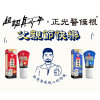Muscle soreness may lead to a decline in physical performance
(UHO Health & Wellness Editorial Team / Compiled)
When experiencing soreness in the shoulders and discomfort in the arms, many of us might wonder, "Could this be a frozen shoulder?" In the past, this kind of discomfort primarily occurred in individuals around the age of 50, hence the term "frozen shoulder." However, recently, this symptom has also been observed in people in their 40s and even their 30s. Nevertheless, even when problems arise, many people tend to ignore the feeling of soreness, thinking they can tough it out or simply take painkillers.
Ignoring Soreness Leads to Reduced Physical Functionality
In reality, "soreness" is a signal from our body's sensors. Put more plainly, "soreness" is a sign informing us of our body's condition. If we ignore soreness, believing that all we need is more rest, painkillers, or endurance, and do not take active steps to alleviate the symptoms, our bodies will become stiffer. This can lead to reduced physical functionality and even result in the development of diseases.
Essentially, this discomfort that makes one restless stems from tense and knotted muscles, such as stiff shoulders and neck or lower back pain. Ultimately, all of these originate from the muscles.
Muscles Turning into Knots Hinders Pain Relief
Feeling tired due to excessive exertion, experiencing a decline in physical condition due to stress, or encountering muscle soreness following vigorous exercise all result from the formation of thick and rigid muscle knots. Under normal circumstances, muscles should be as elastic as rubber bands. However, once muscles become knots, their fibers become tangled, causing soreness. At this point, even stretching the muscles vigorously won't elongate them, rendering it ineffective in alleviating the pain.
Soreness Indicates Shortened Muscle Fiber Length Due to Stress
When soreness arises, it signifies that the muscle fibers in the affected area have shortened. The muscles become stiff and rigid, making movement difficult. Subsequently, the fascia, the outer layer of the muscles, also hardens and compresses nerves, leading to poor blood circulation. This then initiates a progressively worsening vicious cycle. Muscles that are either too short or too stretched cannot exert their original strength and functionality.
Tingling in Hands and Feet Mostly Due to Muscle Tension and Stiffness
Once muscle fibers lose their elasticity and shorten, the muscles that connect to the bones, such as the elbow or the calf muscles leading to the Achilles tendon, will experience pain due to the tension. Additionally, the nerves passing beneath the muscles will also be compressed and entangled, causing areas affected by nerve-related issues to feel tense and exhibit symptoms of radiating pain. Therefore, the tingling sensation in the hands and feet or the headache after exertion are mostly problems caused by muscle tension and stiffness.
Hence, the only way to release these tangled muscles and nerves is through muscle fascia stretching and massage. This self-healing and soothing therapy effectively relaxes stiff muscles. By restoring misaligned muscles to their original state, we can enhance smooth movement and better circulation, ultimately restoring health. (Excerpt from "Rolling and Loosening Fascia for Zero Soreness Every Day" by Cai Shi Culture)
Source: UHO Health & Wellness Network(UHO Health & Wellness Editorial Team / Compiled)








